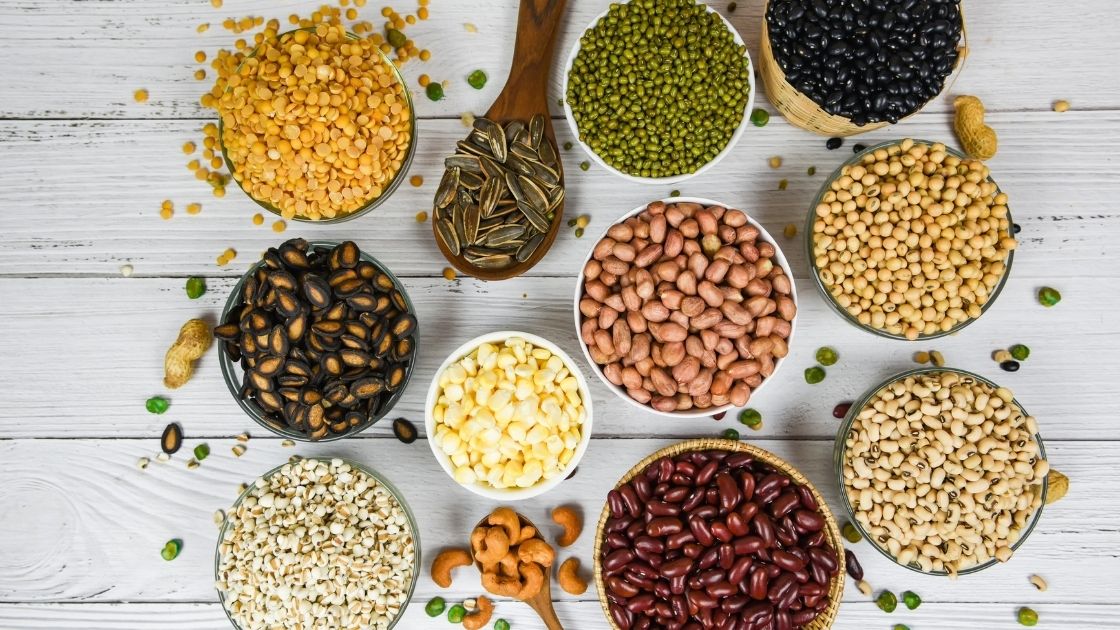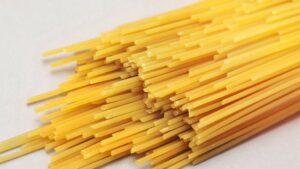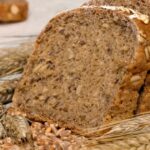Want to be healthy? Want to lose weight? Instead of spending your hard-earned money on ”miracle pills” that will only make you feel gullible, consult with a real weight loss guru. Dietitians are the real experts; they will tell you why to incorporate whole grains for healthy eating.
Dietitians have regulated healthcare professionals who are licensed to assess and diagnose dietary problems. Forget about an apple a day and grab a handful of whole grains to stay healthy!
You can get whole grains into your diet in many ways, including whole wheat flour and following a Mediterranean diet. If you want to learn more about how whole grain benefits your health, continue reading.
List of Whole Grains Food:
This list provides some essential whole-grain foods to include in your everyday diet. With all the health benefits of getting enough whole grains in, you will never regret it. Overall a dietitian will recommend that you get at least three servings of whole grains each day. Although 98% of the population probably doesn’t get even close to the amount, it can benefit you greatly with a healthy diet meal plan.
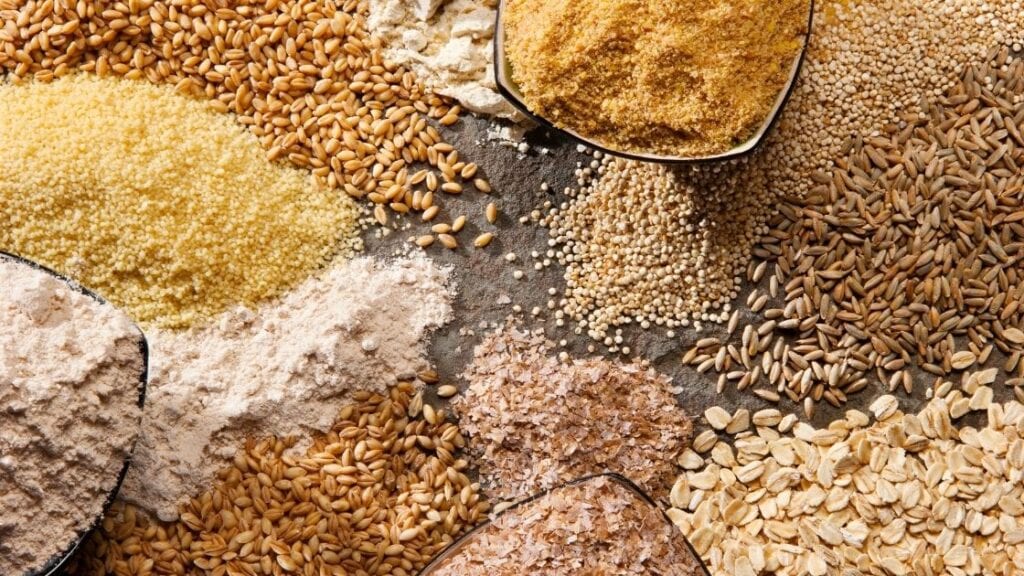
This is a list of whole grains that are easy to incorporate into your diet for everyday consumption.
Brown rice
Always opt for the brown rice variety – it contains 75% more antioxidants, magnesium, phosphorus, and vitamin B than white rice.
Brown rice is a delicious and nutritious food that is becoming increasingly popular. It is a type of whole-grain rice that has not been refined or processed. This means it still contains all of the natural nutrients and fiber found in the rice kernel, making it a much healthier choice than white rice.
If you’re looking for a tasty and healthy alternative to white rice, brown rice is worth trying. It is packed full of nutrients and fiber and has a delicious nutty flavor that pairs well with various dishes. It’s also incredibly versatile and can be used in everything from stir-fries and soups to salads and side dishes.
Buckwheat
This is a great option for people suffering from celiac disease. It is also great grain for your brain – the high manganese content boosts brainpower. It is also a great source of magnesium.
Buckwheat is a nutritious and versatile food that has been gaining popularity recently. Despite its name, buckwheat is not a type of wheat but rather a seed closely related to rhubarb and sorrel.
One of the great things about buckwheat is its high protein content. It’s also gluten-free, which makes it a great choice for people who are sensitive to gluten or have celiac disease. Buckwheat is also a good source of fiber, which is important for maintaining a healthy digestive system.
Whole Barley
Studies have shown that whole barley (not the pearled version) can cause a significant drop in cholesterol levels – up to 10%.
Whole barley is a nutritious and versatile grain that has been around for thousands of years. It is a type of cereal grain that is often used in soups, stews, and salads. Unlike refined grains, whole barley has not had its bran or germ removed during processing, which means it is rich in nutrients and fiber.
One of the great things about whole barley is its high fiber content. Fiber is important for maintaining a healthy digestive system, and it can also help to lower your cholesterol levels and reduce your risk of heart disease. Whole barley is also a good source of complex carbohydrates, which provide your body with the energy it needs to function properly.
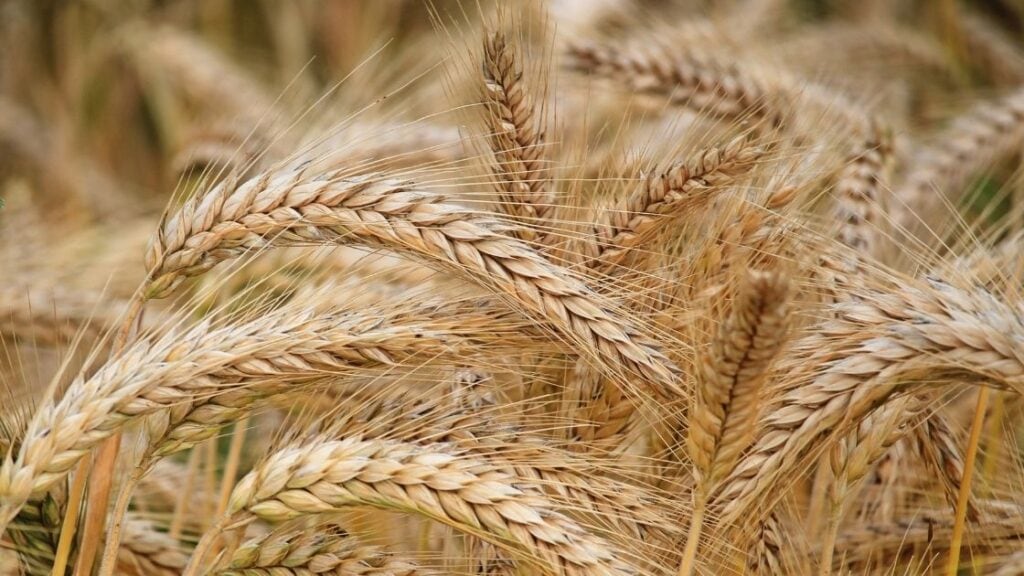
Bulgar
Bulgur is a type of whole grain that is made from cracked wheat. It has been a staple in Middle Eastern and Mediterranean cuisine for thousands of years and is now becoming increasingly popular in other parts of the world as well.
One of the great things about bulgur is its high nutritional value. It is a good source of fiber, protein, vitamins, and minerals, making it a healthy addition to any diet. Bulgur is also low in fat and calories, making it a great choice for people trying to lose or maintain a healthy weight.
Bulgur is incredibly versatile in the kitchen and can be used in various dishes. It can be used as a substitute for rice, couscous, or quinoa and is often used in salads, stews, and pilafs. Bulgur’s slightly nutty flavor pairs well with various ingredients, including vegetables, herbs, and spices.
Quinoa
Quinoa packs a powerful protein punch and is also available in a few different shades. It contains all nine amino acids and is gluten-free as a complete protein.
Quinoa is a type of whole grain that is native to South America. It has been a staple in the diets of Andean people for thousands of years and is now becoming increasingly popular in other parts of the world as well.
One of the great things about quinoa is its high nutritional value. It is a complete protein that contains all nine essential amino acids your body needs to function properly. Quinoa is also a good source of fiber, vitamins, and minerals, making it a healthy addition to any diet.
Quinoa is incredibly versatile in the kitchen and can be used in various dishes. It can be used as a substitute for rice, couscous, or pasta and is often used in salads, soups, and casseroles. Quinoa has a slightly nutty flavor that pairs well with various ingredients, including vegetables, herbs, and spices.
Amaranth
This slightly nutty grain is incredibly versatile. It is naturally gluten-free and rich in protein, fiber, and antioxidants.
Amaranth is a highly nutritious pseudo-grain cultivated for thousands of years. It was a staple food of the Aztecs and played an important role in their religious ceremonies. Today, amaranth is gaining popularity as a health food due to its high protein and fiber content and its rich array of vitamins and minerals.
In addition to its nutritional benefits, amaranth is versatile and can be used in various dishes, from breakfast porridge to savory stews and even baked goods. Amaranth is a great choice for anyone looking to add nutrient-dense food to their diet.
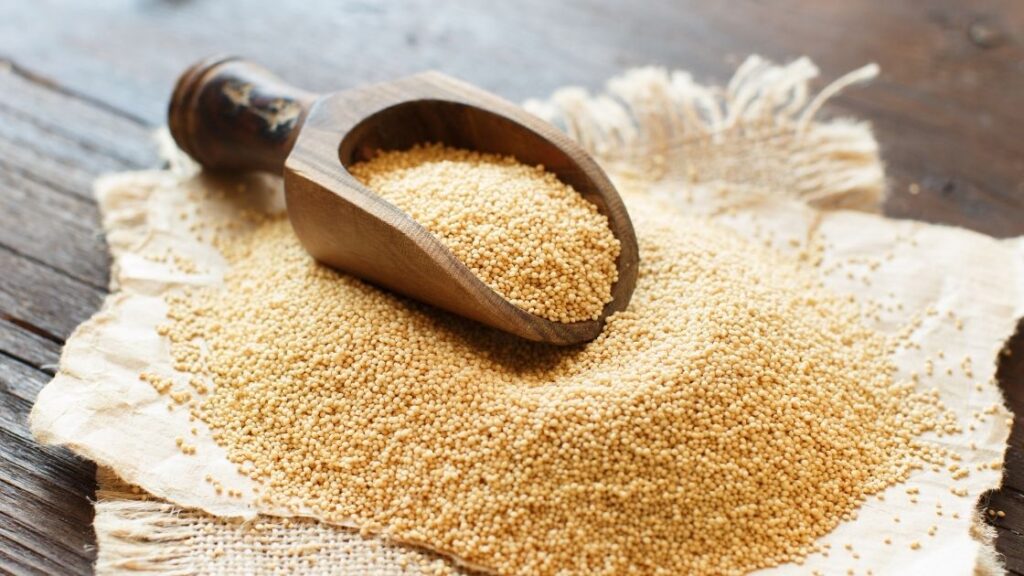
Oats
Oats are a type of cereal grain that is commonly consumed in the form of oatmeal or rolled oats. They are a rich source of fiber, particularly beta-glucan, a type of soluble fiber that has been shown to lower cholesterol levels and reduce the risk of heart disease.
Oats are also a good source of protein, vitamins, and minerals, including manganese, phosphorus, and magnesium. Because they are low in calories and fiber, oats are often recommended as a healthy breakfast option.
They can be prepared in various ways, from a warm bowl of oatmeal with fruit and nuts to a crunchy granola topping for yogurt or smoothie bowls. Whether you want to improve your heart health or add a nutritious staple, oats are a great choice.
Sorghum
Sorghum is a cereal grain that is widely grown in warm and arid regions around the world. It is a versatile crop that can be used for various purposes, including food, animal feed, and biofuel production.
Sorghum is a good source of dietary fiber, protein, and essential vitamins and minerals, including iron, magnesium, and phosphorus. Due to its gluten-free nature, sorghum has become increasingly popular as a substitute for wheat in gluten-free products. It can make flour, baked goods, and even beer.
In addition to its nutritional benefits, sorghum is a drought-tolerant crop that requires minimal water and is an important food source in areas with limited rainfall.
Overall, sorghum is a valuable crop with nutritional and economic benefits.
Whole Rye
According to The Organic Center, rye has four times the fiber than standard whole wheat grains and has more nutrients per serving. A helping will also provide you with 50% of your daily dose of iron.
Whole rye is a type of cereal grain that is closely related to wheat and barley. It is a rich source of dietary fiber, particularly insoluble fiber, which helps promote regularity and digestive health.
Whole rye is also a good source of several essential vitamins and minerals, including manganese, magnesium, and phosphorus.
Because of its high fiber content, whole rye is often used to make hearty bread and crackers that are popular in Northern and Eastern European cuisines.
In addition, whole rye can be used as a substitute for wheat flour in baking recipes for gluten-intolerant people. Overall, whole rye is a nutritious and versatile grain that can be incorporated into a healthy and balanced diet.
Kamut
This ancient grain is considered to be the great-grandfather of all grains. It has a slightly nutty flavor and contains vitamins B, thiamin, and niacin for an energy boost.
Kamut is a type of ancient wheat believed to have originated in Egypt thousands of years ago. It is a larger grain than modern wheat and has a distinctive nutty flavor. Kamut is a good source of protein, dietary fiber, and several essential vitamins and minerals, including magnesium, zinc, and selenium.
It is also higher in many nutrients than modern wheat and is often considered to be more easily digestible. In many recipes, Kamut is commonly used to make bread, pasta, and cereal products and can be substituted for wheat flour.
Due to its nutritional benefits and unique flavor, Kamut has gained popularity as a health food and is often included in diets focused on whole, natural foods.
Wild rice
This aquatic grass is a wonderful source of both protein and fiber. It also packs a mean punch as an antioxidant and helps to keep the mitochondria in your cells healthy.
Wild rice is a type of aquatic grass native to North America. It is a nutritious grain rich in protein, dietary fiber, and several essential vitamins and minerals, including folate, magnesium, and zinc.
Unlike other types of rice, wild rice has a distinct nutty flavor and chewy texture. It is commonly used in various dishes, from soups and salads to stuffings and casseroles. Wild rice is also a popular ingredient in Native American cuisine and is often used in traditional dishes such as wild rice soup and fry bread.
Due to its nutritional benefits and unique flavor, wild rice has gained popularity as a healthy and flavorful alternative to other grains.
Farro
Farro joins the ranks of other ancient grains, and it is a great source of iron and magnesium. It is low in gluten but not entirely gluten-free.
Other helpful grains can also be found in dietary fiber and grain cereal. This makes increasing your grain consumption easy, and getting a healthy dose of vitamin E to boot.
Farro is an ancient wheat grain cultivated in the Mediterranean region for thousands of years. It is a nutritious grain with protein, fiber, and several essential vitamins and minerals, including iron, magnesium, and zinc.
Farro has a nutty flavor and a chewy texture, and it can be used in various dishes, from soups and salads to risottos and pilafs. It is also a great alternative to rice or pasta and can be used in stir-fries and grain bowls.
Farro is often used in Italian cuisine and is a key ingredient in dishes such as farrotto, a creamy risotto-like dish made with farro. Overall, farro is a versatile and nutritious grain that can be incorporated into various dishes for added flavor and texture.
Healthy diets following clinical nutrition are perfect for receiving the ultimate health benefits – this can be achieved with whole grains. White bread is processed food and will not affect your daily grain intake. Swap your white bread for grain bread instead!
Health Benefits of Wholegrains
Among all the whole grains benefits, your improved overall health is the main inspiration for incorporating them into your diet. Still, it’s good to know that whole grain can also make you feel fuller for longer, assisting in losing unwanted weight.
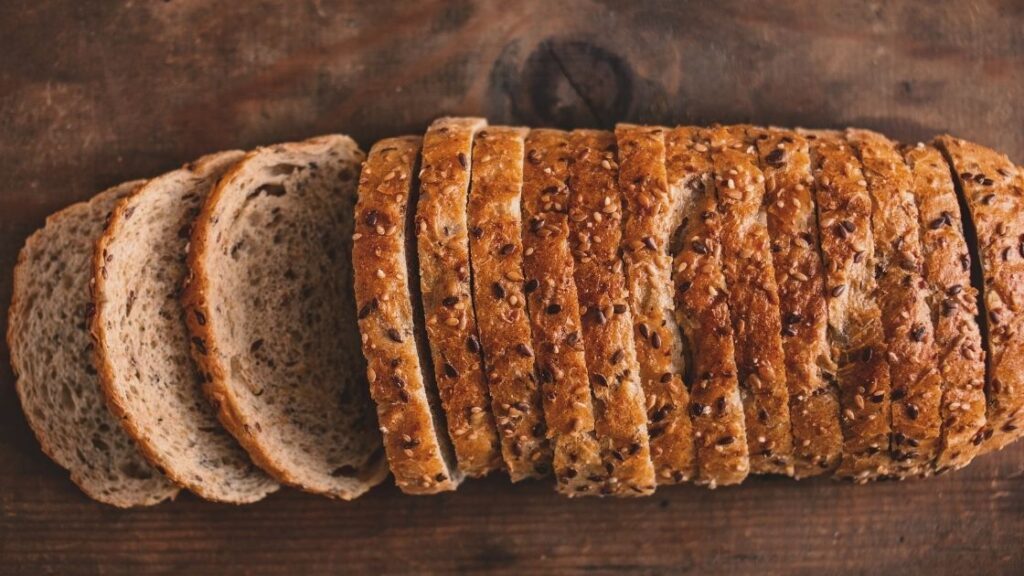
With many weight loss diet plans, you do not introduce enough healthy and nutritious foods into your daily diet. By planning your whole grain-rich diet, you can build a healthy immune system, boost your brainpower, and even lose some weight. Lose weight and get healthier – what’s there not to smile about?
Reduced Risk of Type 2 Diabetes
According to studies by the Centers for Disease Control and Prevention, diabetes is one of the leading causes of death in the USA. One in every 10 Americans is diagnosed with diabetes.
One of the easiest ways to prevent yourself from developing Type 2 Diabetes is to follow a balanced diet that includes whole grains. It has been proven that consuming more whole grains will keep the doctor away and Type 2 Diabetes.
Rich in Fiber
Fiber, fiber, fiber, you can’t get enough of it. Whether you want to lose weight or improve your health, fiber is an excellent source of nutrients with many other health benefits. Still, not all of us get a sufficient amount of fiber daily. A whole grain-rich diet will take care of the problem.
The fiber found in most whole grain foods includes 6 grams per cup of barley, 5 grams in a cup of Quinoa, and 3.5 grams per cup of brown rice. You can easily introduce these ingredients into a balanced and healthy diet without breaking a sweat.
Fiber plays a significant role in our health; men and women must get it in specific amounts. Women need at least 21 grams of fiber each day for the minimum benefits to be provided.
It is a good Source of Complex Carbs
The complex carbs in whole grains turn into glucose energy which you then use to fuel your body, brain, and muscles. Simply swap out refined grains with whole grains to see the health benefits.
These whole grains are not as processed as refined grains, which means it’s a more natural food, and as you know by now, natural is always better. By eating whole grains, you are naturally swapping simple carbs with complex carbs to provide you with a smart and healthy diet. This helps you to cut back on sugar, calories, and fat while boosting your intake of essential micronutrients.
Reduced Risk of Heart Disease
Heart disease is another leading killer in the world and needs to be put in the corner. Heart disease is the number one leading cause of death in the USA. Although there are numerous reasons why so many people suffer from coronary disease, dietary habits are one of the causes.
Heart disease mainly develops if you have a large intake of trans fat, saturated fat, sodium, and cholesterol. All these factors can cause you to develop heart disease, but don’t fear; whole grains are here, and dietitians swear by them.
Consuming about three servings of whole grains daily can help prevent heart disease. Incorporate this hearty food into your diet and notice the difference quickly. A healthy heart equals a healthy life.
Natural Source of Protein
Animal products aside, protein is also found in whole-grain foods and will provide many benefits. If you follow a vegan or vegetarian diet, you may not get enough protein anyway. This will make whole grains a wise choice.
Although primarily associated with building muscle, there are many other benefits to increasing your protein intake, like weight loss, cell repair, growth, development, and so on.
Improve Digestion and Satiety
Whole grains, predominantly brown rice, and whole wheat flour or bread are packed with fiber, slowing your digestion and increasing feelings of satiety. This lowers energy intake and leads to lower body fat. Feeling fuller for longer and using whole grains correctly can encourage a healthier weight and digestion.
Better Gut Health
Can you feel it in your gut? That’s the whole grains working. By eating a variety of nutritious foods, you are taking charge of your gut health.
Whole grains, especially oats, have proven to contribute significantly to a healthy gut microbiome. This is mainly due to the non-resistant starch in oats and other whole-grain foods. This is another benefit of consuming fiber, and it greatly reduces the risks of chronic disease and improves mood and cognition.
Source of Plant-Based Iron
Iron is found in most protein-based foods, but getting enough iron is essential. Fortified cereal, red meat, legumes, seafood, dried fruit, and whole grains are the most iron-rich foods. You can also eat quinoa or oatmeal to increase your iron intake for vegetarian lifestyles.
Millet is a whole grain food gaining popularity in the USA, although it hasn’t always been easy to find. It contains a lot of iron and is one of the best sources to choose from if you follow a plant-based diet.
Reduced Risk of Certain Cancers
Whole-grain foods are one of the most helpful foods to prevent cancer. About 40% of people will get diagnosed with cancer at some point. However, live a healthy lifestyle and ensure you get enough whole grains to lower your risk.
Whole grains are also associated with a lower risk of colorectal cancer. This was proven by a study conducted by the American Institute For Cancer Research. The study confirmed that eating at least three servings of whole grains daily can help reduce cancer risks by 17%. It is also the most critical food source of bioactive phytochemicals associated with better breast cancer management.
Grab Those Whole Grains
Are you at the shops yet? Prepare your shopping list and begin to feel the difference between your health and body weight. With all these benefits, there is no reason not to bring whole grains into your healthy, balanced diet. With all the fiber, protein, and other nutrients, you can live a healthier life and have a reduced risk of developing chronic diseases.

Reinette Robbertze is a highly qualified professional in the health and nutrition industry, having completed both Journalism and Nutrition diplomas. With a remarkable portfolio of health blogs and magazine articles to her name, Reinette’s writing is fueled by her genuine passion for healthy living. Drawing on her academic background, Reinette delivers authentic and insightful information to her readers. Her engaging writing style, blended with personal anecdotes, creates an immersive experience that keeps readers engaged and informed. Keep following her work for the latest updates and informative articles on health and nutrition.
